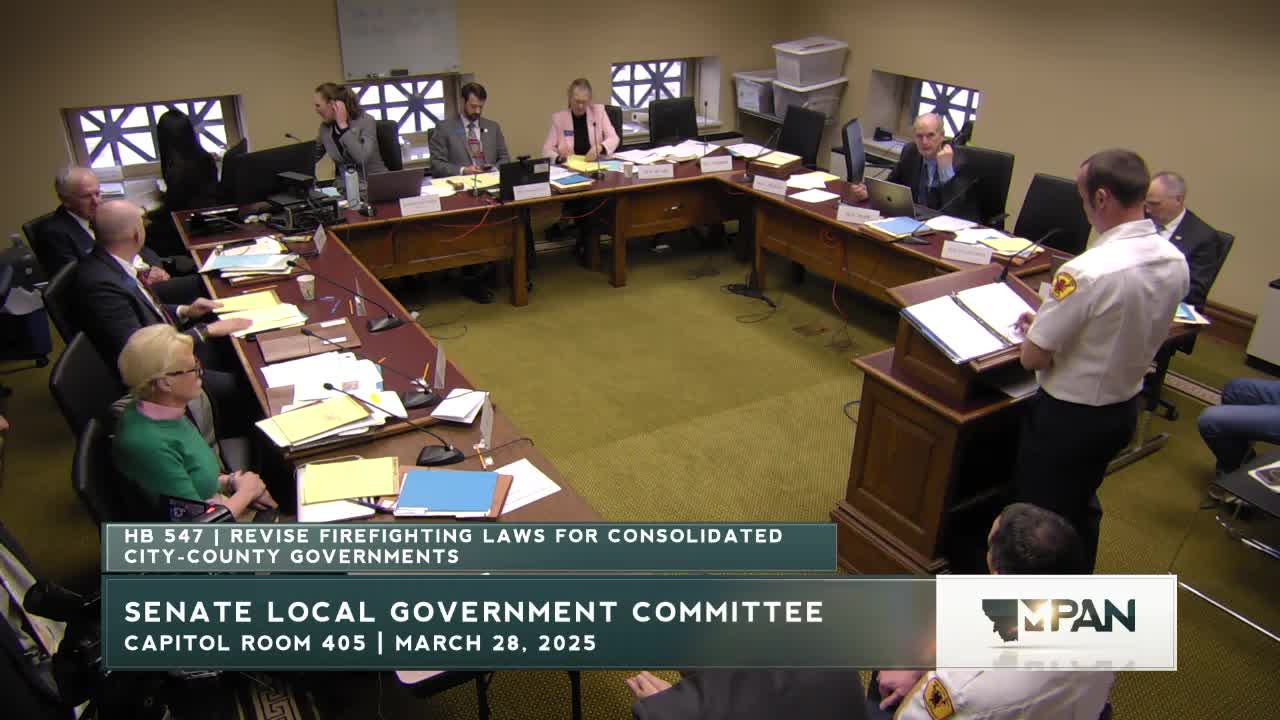Fire services director advocates for unified training program amid ongoing volunteer resistance
March 28, 2025 | 2025 Legislature MT, Montana
This article was created by AI summarizing key points discussed. AI makes mistakes, so for full details and context, please refer to the video of the full meeting. Please report any errors so we can fix them. Report an error »

In a recent Senate Local Government meeting, discussions centered on the challenges and opportunities facing volunteer fire departments in Montana. The meeting highlighted a consolidation plan proposed by a fire chief aimed at improving operational efficiency and financial management within the fire services. Despite the potential benefits, the plan faced significant resistance over a span of 17 years, illustrating the complexities of reforming long-standing volunteer structures.
The consolidation plan included provisions for acquiring new fire trucks and buildings, as well as enhancing training for volunteer firefighters. The chief emphasized that consolidating training efforts would allow for more effective instruction and better preparedness among volunteers. However, previous attempts to implement such training programs were met with pushback, particularly regarding standard firefighting techniques.
Current Fire Services Director Osborne has initiated a new training program, which initially showed promise in gaining support from both career and volunteer firefighters. The chief expressed a strong belief that comprehensive training is essential for improving safety and operational effectiveness. He noted that the lack of uniform training standards poses risks, especially during emergency responses where coordination is critical.
Despite the challenges, there is a sense of optimism among some younger volunteers who support the proposed training initiatives but are hesitant to voice their opinions due to the contentious history within the department. The chief remains hopeful that a new training program can be established that will endure and enhance the capabilities of both career and volunteer firefighters.
The meeting concluded with a call for clearer standards and improved collaboration among all parties involved. As the discussions continue, the focus remains on finding common ground to ensure the safety and efficiency of fire services in Montana. The outcome of these deliberations could significantly impact the future of volunteer firefighting in the state, as stakeholders work towards a more unified approach to training and operations.
The consolidation plan included provisions for acquiring new fire trucks and buildings, as well as enhancing training for volunteer firefighters. The chief emphasized that consolidating training efforts would allow for more effective instruction and better preparedness among volunteers. However, previous attempts to implement such training programs were met with pushback, particularly regarding standard firefighting techniques.
Current Fire Services Director Osborne has initiated a new training program, which initially showed promise in gaining support from both career and volunteer firefighters. The chief expressed a strong belief that comprehensive training is essential for improving safety and operational effectiveness. He noted that the lack of uniform training standards poses risks, especially during emergency responses where coordination is critical.
Despite the challenges, there is a sense of optimism among some younger volunteers who support the proposed training initiatives but are hesitant to voice their opinions due to the contentious history within the department. The chief remains hopeful that a new training program can be established that will endure and enhance the capabilities of both career and volunteer firefighters.
The meeting concluded with a call for clearer standards and improved collaboration among all parties involved. As the discussions continue, the focus remains on finding common ground to ensure the safety and efficiency of fire services in Montana. The outcome of these deliberations could significantly impact the future of volunteer firefighting in the state, as stakeholders work towards a more unified approach to training and operations.
View full meeting
This article is based on a recent meeting—watch the full video and explore the complete transcript for deeper insights into the discussion.
View full meeting
